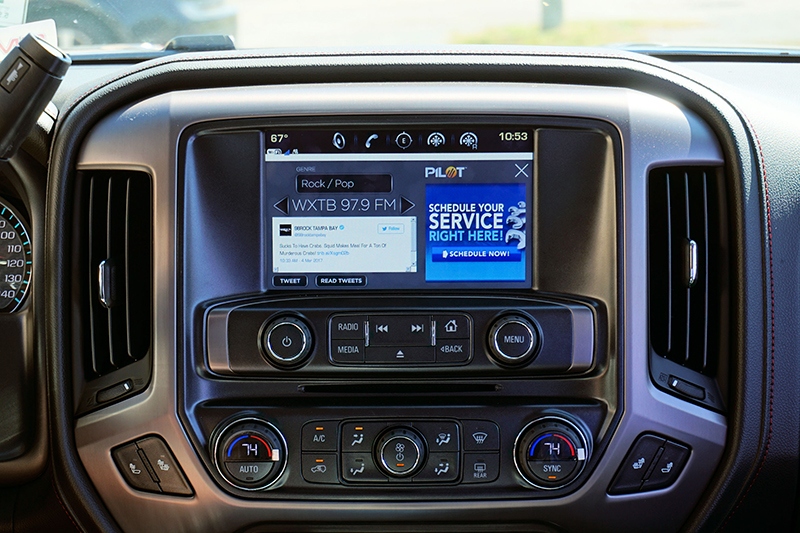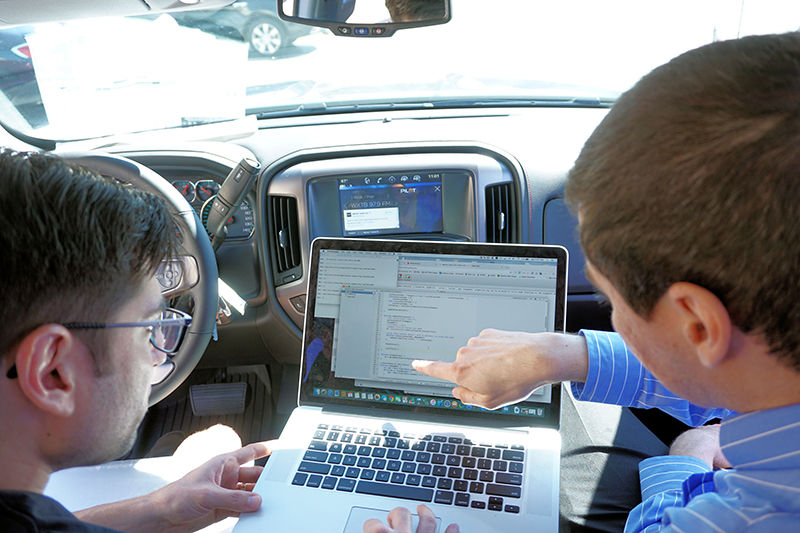Connected cars, like smartphones, use apps to provide access to a variety of features and capabilities. Also like smartphones, connected cars support a variety of different platforms for supporting apps. For example, Ford vehicles use the Sync platform and GM vehicles use MyLink.
 Automakers are making platforms available to encourage independent developers to create apps. In February, GM sponsored the first “Makers Hustle Harder” Hackathon at the Tampa Hackerspace in Tampa, FL, and PILOT was there with a team focused on developing an app to demonstrate hybrid radio technology. Altogether, over 70 app developers participated in this hackathon resulting in 13 prototype GM vehicle apps.
Automakers are making platforms available to encourage independent developers to create apps. In February, GM sponsored the first “Makers Hustle Harder” Hackathon at the Tampa Hackerspace in Tampa, FL, and PILOT was there with a team focused on developing an app to demonstrate hybrid radio technology. Altogether, over 70 app developers participated in this hackathon resulting in 13 prototype GM vehicle apps.
App developers used GM’s Next Generation Infotainment (NGI) platform, a native HTML5 and Javascript framework that allows developers to use GM’s software development kit (SDK) to build infotainment applications for GM vehicles. The application programming interfaces (APIs) are very powerful and provide developers with access to real-time data from over 300 signals on the vehicle.
Team PILOT’s Radio++ App Demo
The PILOT app, dubbed “Radio++” since it demonstrated “Radio plus internet plus interactivity,” is a “hybrid radio” app. It uses the radio station’s audio delivered over the air and internet content delivered over the vehicle’s broadband connection (either built-in to the vehicle or provided by a Bluetooth-paired smartphone).

The PILOT Radio++ App
The Radio++ features included:
- Local radio stations organized and accessible by genre (“Rock/pop” is selected in the photo). A listener taps the arrows on either side of the station call sign and frequency to switch to the next local station in the selected genre.
- A graphic (shown to the right of the screen), could be the station logo (when the vehicle is moving) or a local advertisement (when the vehicle is stopped). If the user selected the advertisement, the vehicle’s navigation system would provide directions to the business.
- The radio station’s active Twitter feed is displayed to the left of the screen. The app can read the station’s latest tweets over the cars speakers to avoid driver distraction. The driver could also tweet back to the station using speech-to-text technology, but this feature was not fully developed during the limited time available during the hackathon.

Anthony Garreffa, a GM Software engineer, and Rob Holic, from team PILOT, debug the Radio++ app
Some of the other apps developed at the Tampa hackathon included “OTTO,” an Alexa-enabled app that could be used by drivers to check on the status of vehicle systems while they were still in their homes (“Alexa, ask OTTO to see if I need to buy gas on my way to work this morning”), and “Watch Out,” an app that uses the various vehicle sensors to rate how safely the driver is operating the vehicle.
PILOT will continue to explore and develop hybrid radio technology, creating new services and new opportunities for broadcasters and listeners to get the most out of local radio.

